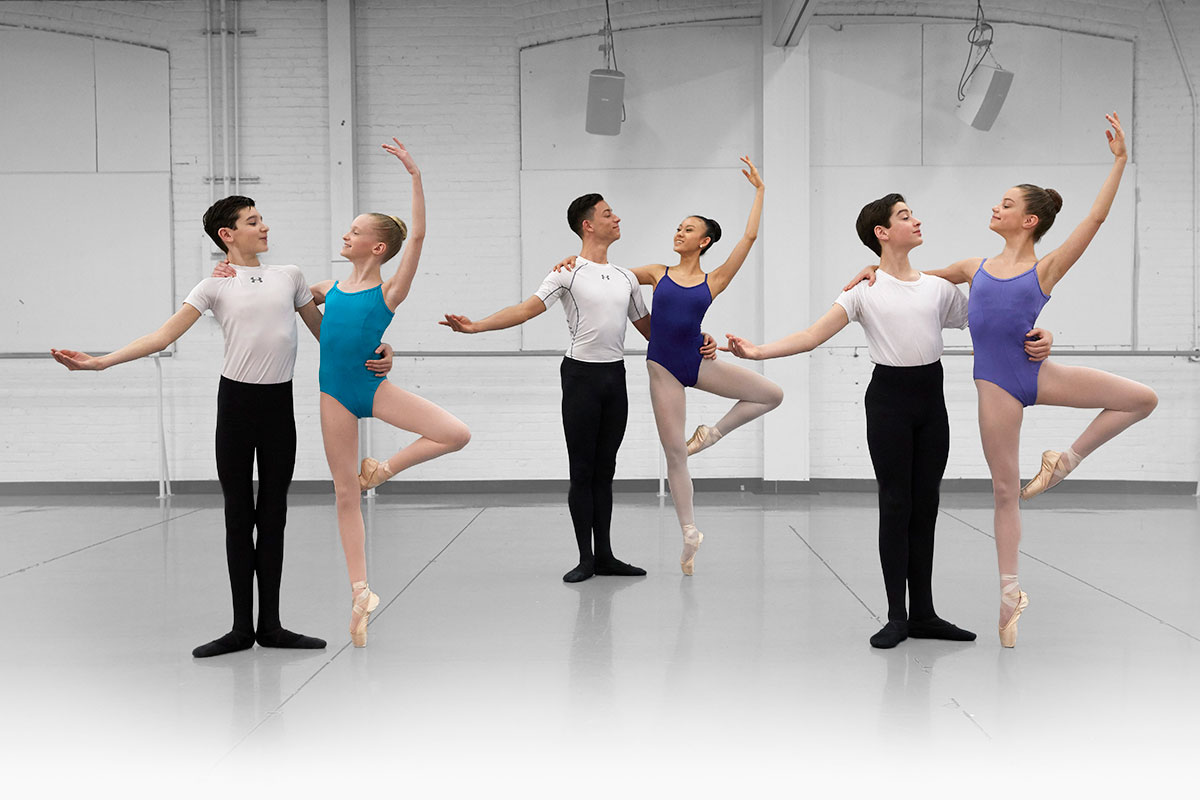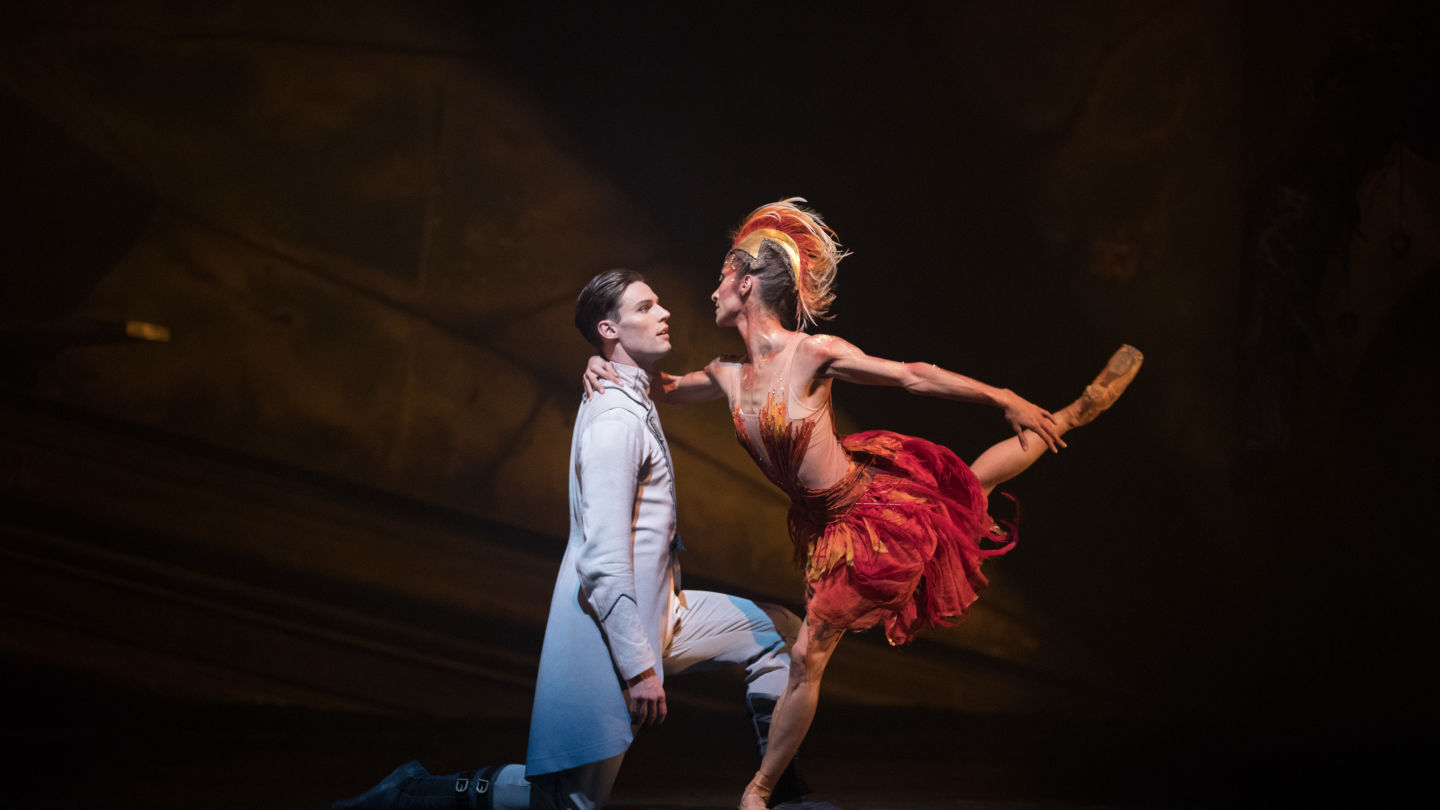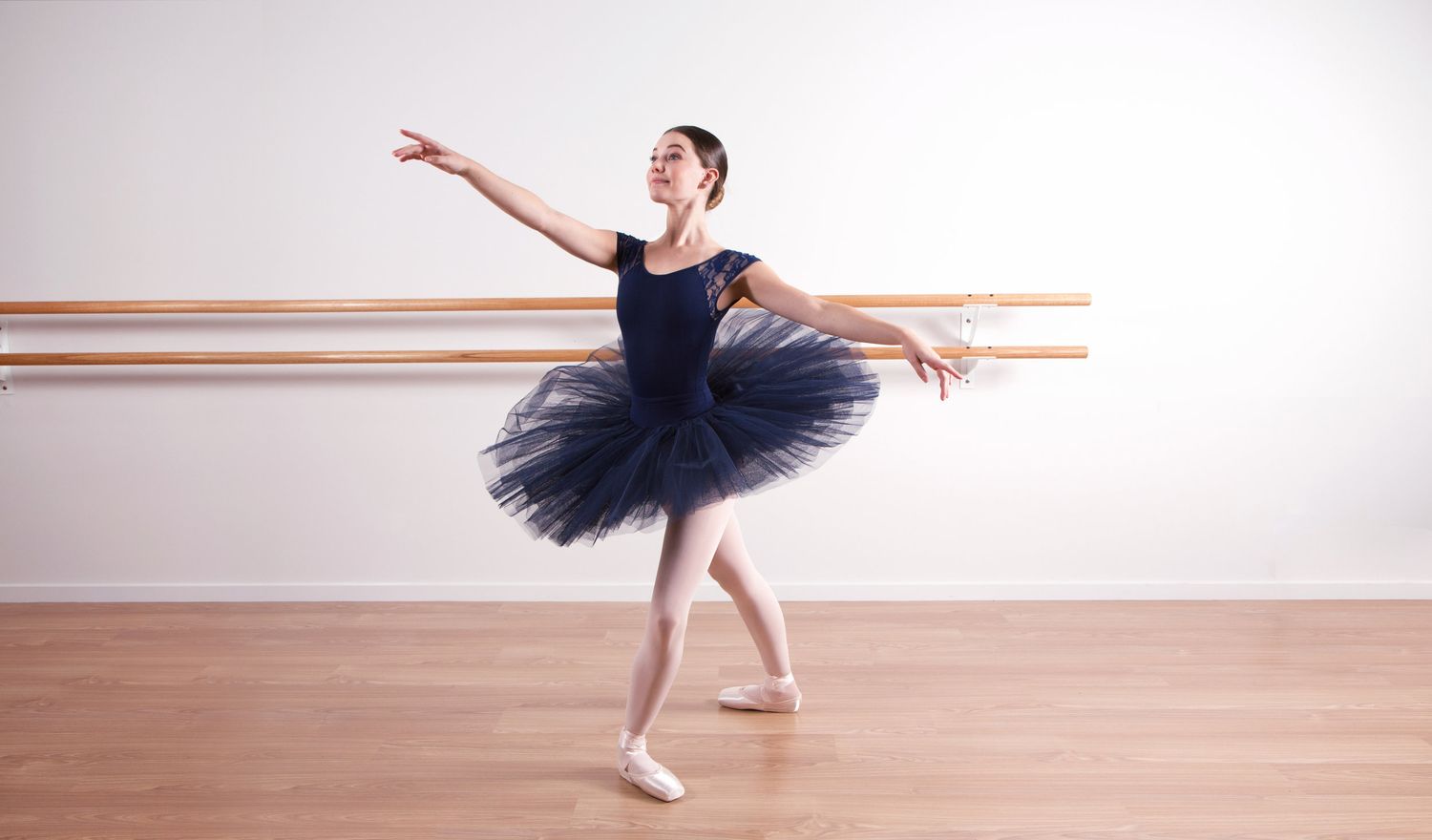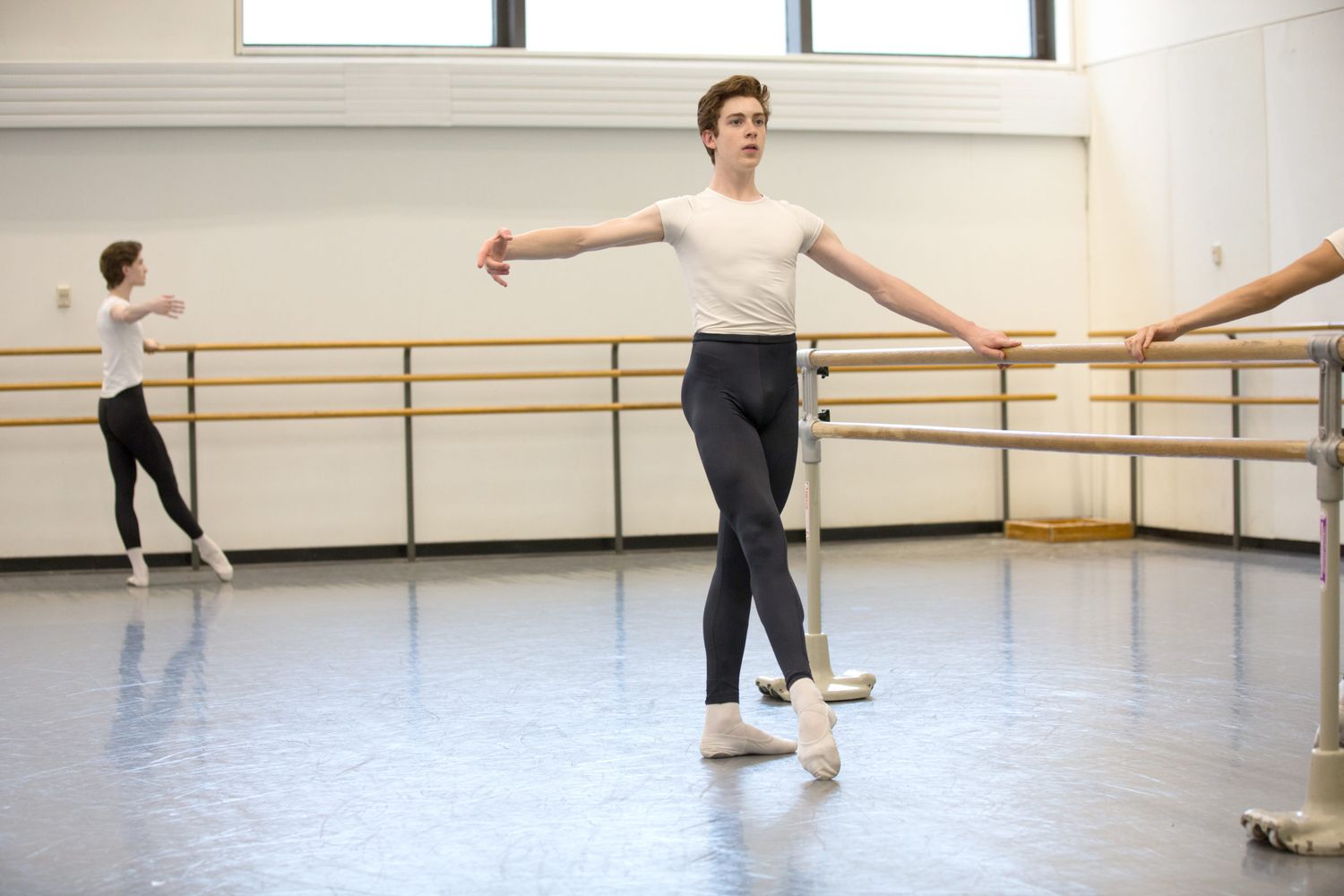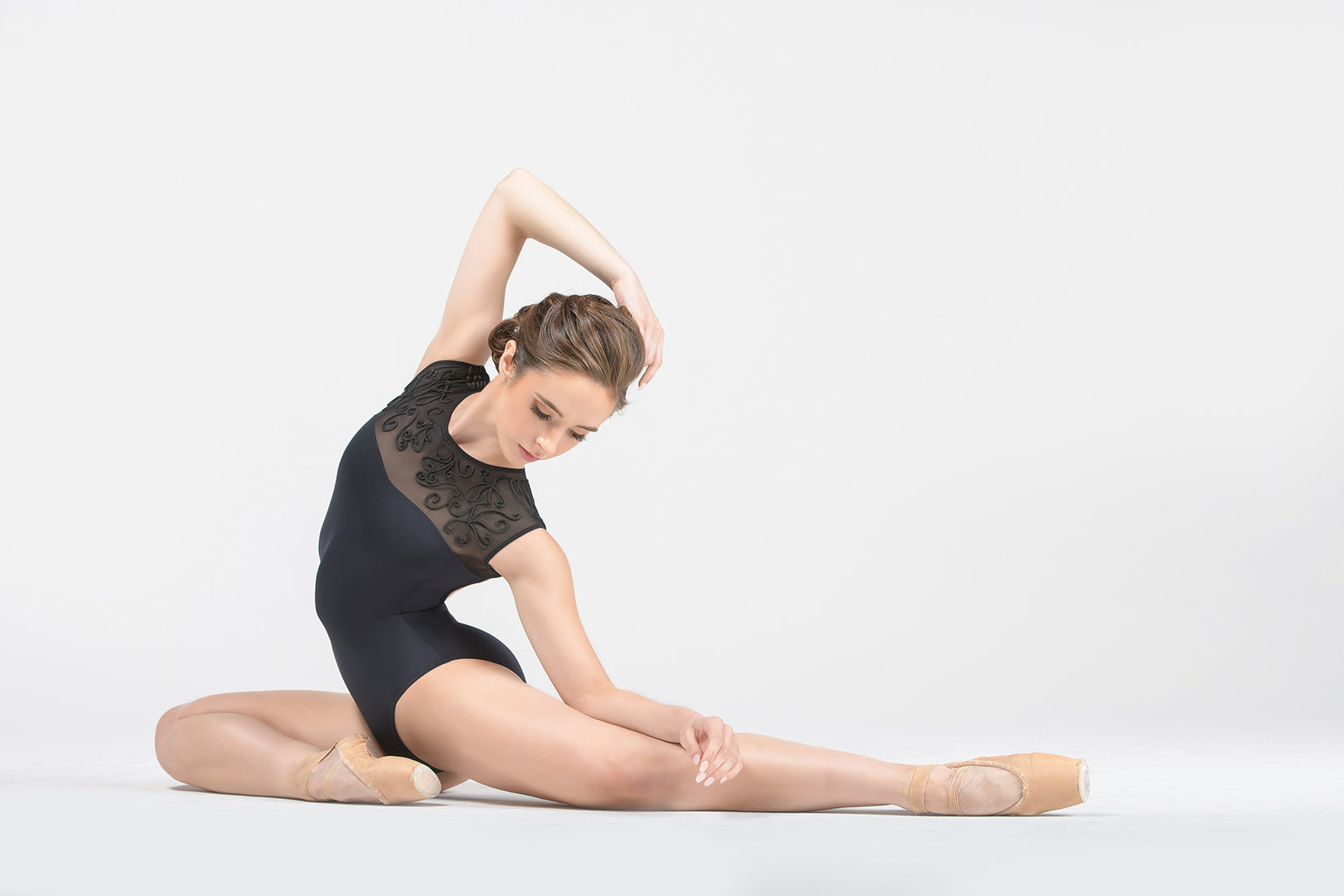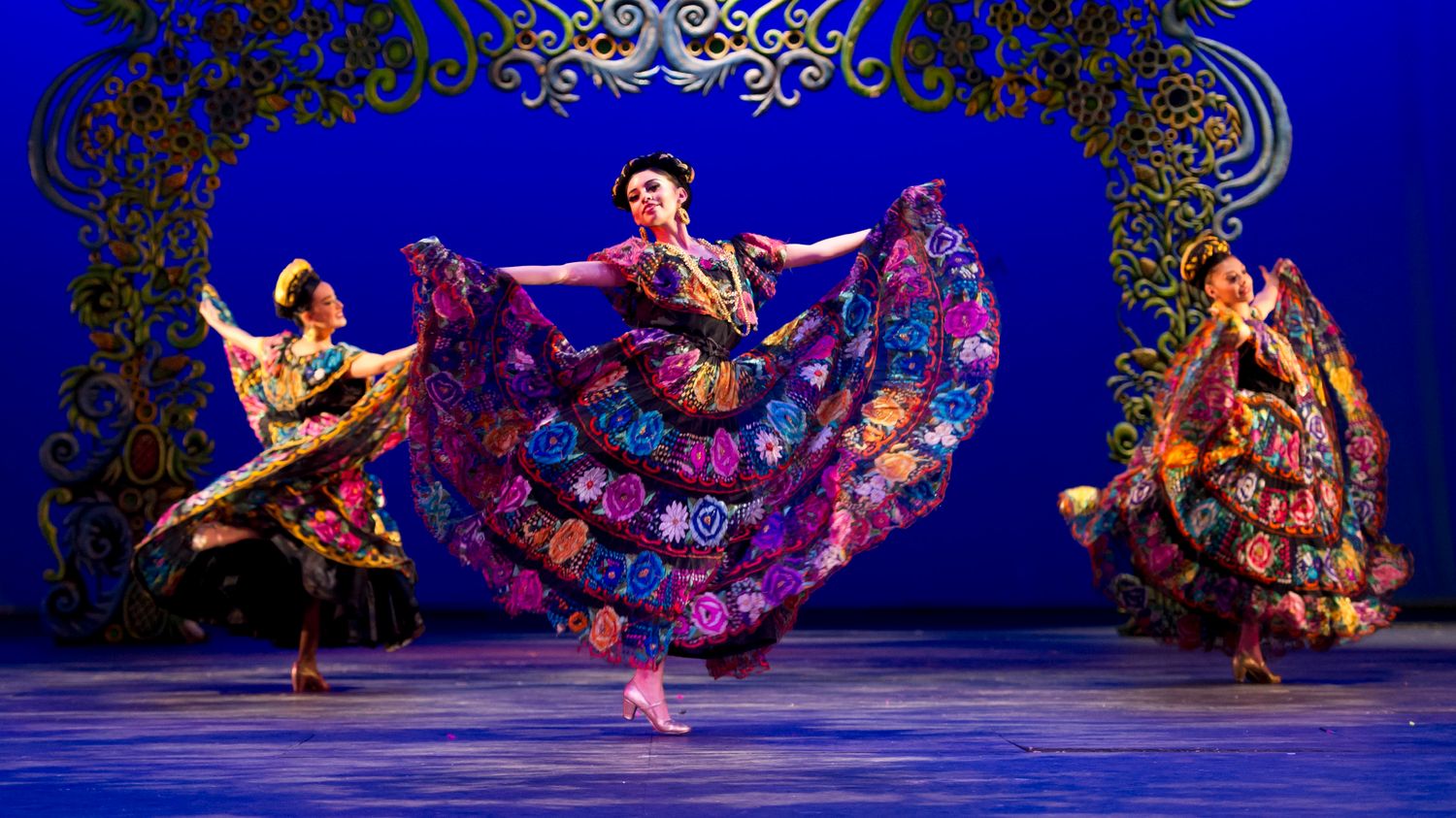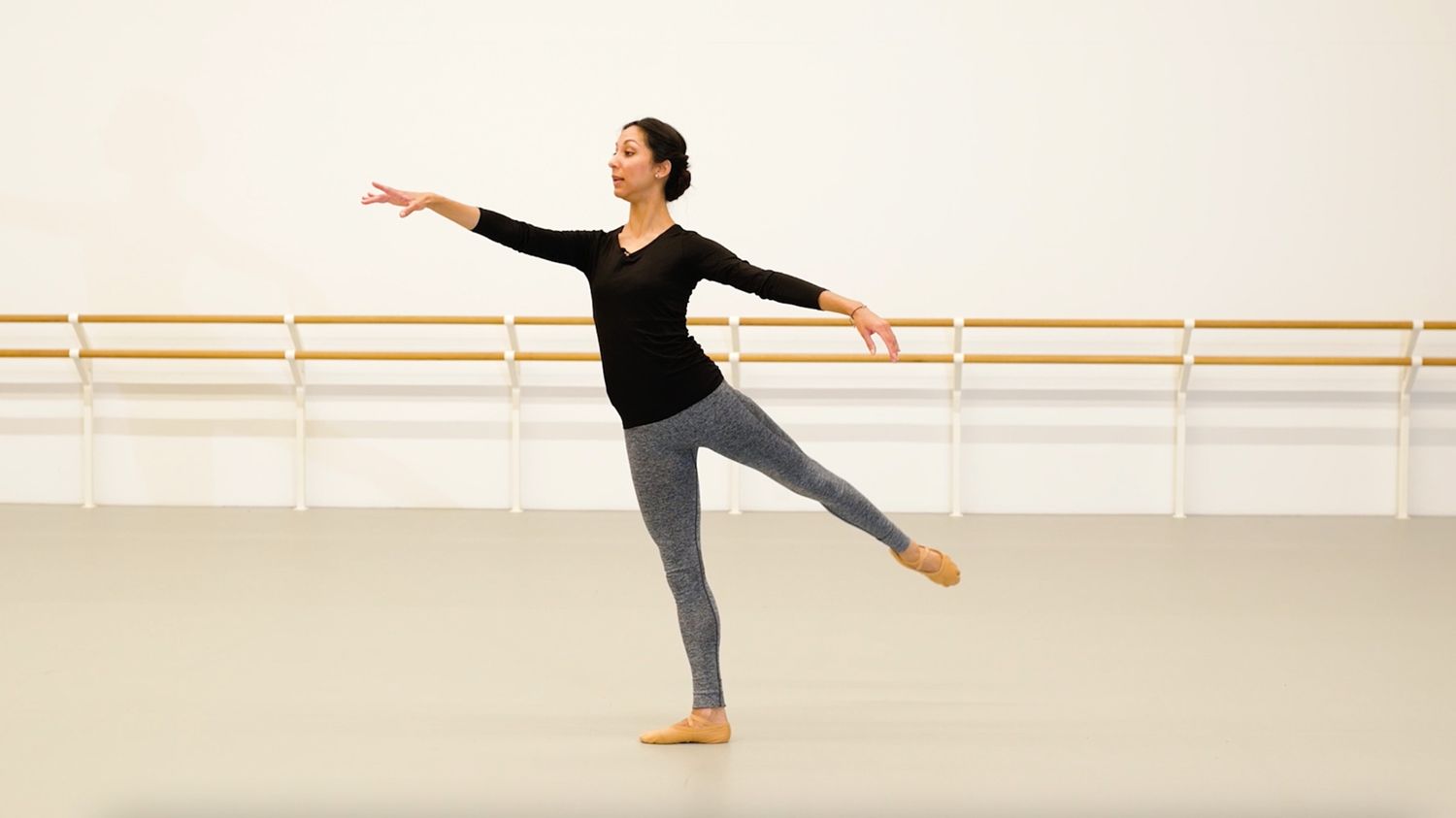Home>Events & Info>Ballet>What Is Ballet Turnout


Ballet
What Is Ballet Turnout
Modified: January 22, 2024
Discover what ballet turnout is and how it is essential for dancers. Learn about the technique, benefits, and importance of achieving proper ballet turnout.
(Many of the links in this article redirect to a specific reviewed product. Your purchase of these products through affiliate links helps to generate commission for AudioLover.com, at no extra cost. Learn more)
Table of Contents
Introduction
Ballet is a beautiful and graceful art form that has captivated audiences for centuries. It requires incredible strength, precision, and control from the dancers. One of the most important aspects of ballet technique is the concept of turnout. Ballet turnout refers to the outward rotation of the legs and hips, allowing the dancer to create beautiful lines and execute intricate movements with ease.
In this article, we will explore the definition of ballet turnout, its historical significance, the physical mechanics behind it, and its importance in technique. We will also delve into the training methods to develop and maintain proper turnout, common mistakes dancers make, and the role of turnout in contemporary dance.
Ballet turnout, also known as “en dehors,” is a fundamental element that sets ballet apart from other forms of dance. It not only enhances the aesthetics of ballet movements but also plays a crucial role in executing steps with balance and stability.
Historically, ballet dance developed in the royal courts of Renaissance Italy and France. During this time, ballet was performed primarily by noble individuals and courtiers. The desire for elegance and poise led to the development of turnout as a key element of the technique. It was believed that turnout created a more graceful and refined appearance, showcasing the dancer’s physical prowess.
The physical mechanics of ballet turnout involve the rotation of the hips and legs from the hip joint outwards. Ideally, a dancer’s legs should be rotated from the hip socket so that the knees and feet are aligned with the direction of the toes. This rotation allows for the expansion of the range of motion and creates a wider base of support, enabling dancers to maintain stability and control in various positions and movements.
The importance of ballet turnout in technique cannot be overstated. When dancers achieve proper turnout, it aligns the body’s joints, creating a strong foundation for balance, alignment, and movement. Turnout not only gives the appearance of elongated lines but also helps distribute weight evenly, reducing strain on individual joints and muscles.
Definition of Ballet Turnout
In the world of ballet, turnout refers to the rotation of the legs and hips outward from the body’s centerline. It is a technique where the dancer rotates their legs from the hip joint, allowing their feet to turn outwards. This rotation creates a visually pleasing effect and enables dancers to perform movements with balance, stability, and grace.
Ballet turnout is not limited only to the legs and feet; it involves the entire lower body, including the pelvis, hips, and thighs. The goal is to achieve a 180-degree rotation where the toes point outwards from the centerline of the body. However, it is important to note that each dancer has different natural turnout abilities, and achieving a perfect 180-degree rotation may not be possible for everyone.
Turnout is a foundational element in ballet technique and plays a significant role in the execution of various ballet movements, such as pirouettes, grand jetés, and développés. It allows the dancer to maintain stability and balance, as well as create elongated lines and fluid movements.
Properly executed ballet turnout not only enhances the aesthetic quality of the dance but also helps prevent injuries. When dancers turn out their legs, it aligns the bones and joints properly, which reduces strain and stress on the knees, ankles, and other joints. It also activates and strengthens the muscles of the inner thighs, hips, and glutes.
It is important to note that ballet turnout should be achieved through rotation from the hip joint and not by forcing the knees or ankles outward. Forcing turnout from the knees or ankles can lead to improper alignment and potential injuries. Instead, dancers should focus on maintaining proper alignment and engaging the correct muscles to achieve turnout.
Ballet dancers undergo extensive training to develop and maintain their turnout. This includes exercises that target the muscles involved in turnout, such as pliés, rotations, and stretches. Dancers also work on strengthening the core and maintaining proper alignment to support their turnout.
Overall, ballet turnout is a fundamental element that sets ballet apart from other dance forms. It not only adds beauty and elegance to the movements but also plays a crucial role in a dancer’s technique and overall performance. Properly executed and supported turnout allows dancers to showcase their skill, precision, and artistry to the fullest.
Historical Significance of Turnout in Ballet
The concept of ballet turnout has a rich historical significance that dates back to the origins of ballet as an art form. Turnout became an essential element of ballet technique during the Renaissance era in Italy and France.
During this time, ballet was primarily performed in the royal courts, and the movements and techniques were influenced by the desire for elegance, poise, and a refined appearance. The aristocracy believed that turnout created a more aesthetically pleasing and graceful presentation on stage.
The development of ballet turnout can be attributed to Catherine de’ Medici, an Italian noblewoman who married the French King Henry II in the 16th century. Catherine brought her love for dance from Italy to the French court, where she introduced various Italian dance forms, including ballet.
Under Catherine’s patronage, ballet began to evolve and adopt techniques that emphasized grace, symmetry, and an elongated line. One of these techniques was the concept of turnout, where the legs and feet rotated from the hip joint outward.
As ballet continued to evolve and gain popularity, ballet masters further refined the principles of turnout. They emphasized the importance of a dancer’s ability to maintain a consistent turnout position throughout their movements, ensuring a sense of unity, harmony, and visual appeal.
The historical significance of ballet turnout goes beyond its visual impact. Turnout also played a practical role in the technical aspects of ballet. By rotating their legs outward, dancers could achieve greater stability and balance in various positions and movements.
Furthermore, turnout allowed dancers to create expanded lines, highlighting the full range of motion in their legs and showcasing the beauty of their movements. By aligning the feet and legs with the direction of the toes, dancers could create a sense of continuity and flow in their dancing, enhancing their overall performance.
Today, ballet dancers still adhere to the tradition of achieving and maintaining proper turnout. It continues to be an integral part of ballet technique and is emphasized in ballet training from beginner to professional levels.
Overall, the historical significance of ballet turnout lies in its contribution to the artistry and technique of ballet as we know it today. It is a testament to the enduring legacy of ballet and its commitment to elegance, precision, and grace.
Physical Mechanics of Ballet Turnout
The physical mechanics of ballet turnout involve the rotation of the legs and hips from the hip joint, allowing the feet to turn outwards. Achieving proper turnout requires an understanding of the anatomical structure and alignment of the body.
When discussing ballet turnout, it is essential to focus on the rotation of the femur bones in the hip sockets. The femur, or thigh bone, has a ball-shaped head that fits into a socket in the pelvis. The angle and depth of the hip socket can vary from person to person, impacting their natural ability to achieve a wide or narrow turnout.
In an ideal ballet turnout position, the legs rotate outward from the hip joint, aligning the knees and feet with the direction of the toes. This alignment creates a seamless line from the hip to the toes, enhancing the aesthetic quality of ballet movements.
It is important to note that turnout is not just a rotation of the legs; it involves the entire lower body. The pelvis and muscles around the hips and thighs play a crucial role in supporting and maintaining proper turnout.
To achieve ballet turnout, dancers must engage the deep external rotator muscles of the hip, such as the piriformis, gemellus muscles, and obturator muscles. These muscles work in tandem to rotate the femur bones outward in the hip sockets.
Additionally, the muscles of the inner thighs, specifically the adductors, play an essential role in turnout. These muscles help stabilize the legs in the turned-out position and provide support for the hip joints.
It is important to emphasize that achieving and maintaining proper turnout should not come at the expense of forcing the knees or ankles outward. The rotation of the legs should primarily come from the hip joint, while the knees and ankles remain aligned with the direction of the toes.
When properly engaged, ballet turnout not only enhances the aesthetic appeal of movements but also improves balance, control, and stability. It creates a wider base of support, allowing dancers to execute steps with ease and grace.
Developing and maintaining turnout requires consistent practice and strengthening of the relevant muscles. Ballet training includes exercises such as pliés, rotations, stretches, and specific strengthening exercises that target the muscles involved in turnout.
Overall, understanding the physical mechanics of ballet turnout is crucial for ballet dancers. It allows them to develop a strong foundation for executing movements with precision, alignment, and artistic expression.
Importance of Ballet Turnout in Technique
Ballet turnout is of utmost importance in ballet technique, as it serves as a foundation for achieving proper alignment, balance, and control. It plays a vital role in enhancing the aesthetic quality of movements and facilitating the execution of intricate ballet steps.
One of the primary benefits of ballet turnout is the improvement of posture and alignment. When dancers engage their turnout, it aligns the bones and joints of the lower body, creating a straight and elongated line from the hip to the toes. This alignment promotes good posture and ensures that the weight is evenly distributed throughout the body, reducing the risk of injuries and strain on specific joints.
The alignment achieved through turnout also allows for better balance and stability. By turning out the legs, dancers create a broader base of support, providing a more secure foundation for various ballet movements. This stability is particularly crucial for executing turns, jumps, and partnering work, where maintaining balance is essential.
Ballet turnout also plays a significant role in the execution of steps and movements with precision and control. When the legs are turned out, it creates more space between them, allowing for better articulation and clarity of movements. This is particularly evident in movements such as développés, arabesques, and grand battements, where the turnout adds aesthetic beauty and elegance.
The engagement of the muscles involved in turnout not only enhances the aesthetics but also contributes to strength and overall muscular development. The muscles of the inner thighs, hips, and glutes are all actively engaged when achieving and holding a turnout position. This engagement helps to strengthen and tone these muscles, resulting in increased power, stability, and control in ballet movements.
Ballet techniques, such as pirouettes and fouettés, heavily rely on turnout for their execution. Properly engaged turnout allows dancers to generate rotational force and maintain balance during multiple turns. The ability to control and utilize turnout in these challenging movements is indicative of a dancer’s technical skill and artistry.
Furthermore, ballet dancers often strive for long, fluid lines in their movements, and turnout plays a significant role in achieving this aesthetic ideal. Turning out the legs elongates the lines created by the body, creating visually pleasing and graceful shapes on stage. These extended lines and graceful movements are the hallmark of classical ballet.
In summary, the importance of ballet turnout in technique cannot be overstated. It enhances posture, alignment, balance, and control, while also contributing to strength and muscular development. Turnout allows dancers to execute movements with precision, clarity, and aesthetic beauty, elevating their performance and showcasing their technical skill and artistry.
Training and Developing Ballet Turnout
Developing and maintaining proper ballet turnout is a lifelong pursuit for ballet dancers. It requires consistent training, strength building, and flexibility work. Here are some key aspects involved in training and developing ballet turnout:
1. Warm-up and Stretching: Prior to engaging in turnout exercises, it is crucial for dancers to warm up their muscles and increase their flexibility. This may include dynamic stretches, such as leg swings and hip rotations, as well as static stretches that target the muscles involved in turnout, like the hip rotators and inner thighs (adductors).
2. Core Strengthening: A strong core is essential for supporting and maintaining proper turnout. Core exercises, such as planks, Pilates, and abdominal exercises, help dancers stabilize their bodies and engage their turnout muscles effectively.
3. Turnout Exercises: Specific exercises are designed to strengthen the muscles necessary for turnout. These exercises include pliés, tendus, dégagés, and passé développés, focusing on the engagement of the hip rotators and inner thighs. It is important to perform these exercises with proper alignment and control to maximize their effectiveness.
4. Strengthening the Pelvic Floor: The muscles of the pelvic floor play a crucial role in supporting and maintaining turnout. Exercises such as Kegels and specific floor exercises can help strengthen and activate these muscles.
5. Cross-training and Conditioning: Apart from ballet classes, cross-training and conditioning exercises can be beneficial for developing overall strength and stamina. Activities like Pilates, yoga, and strength training can help strengthen the muscles supporting turnout, improve flexibility, and enhance body awareness.
6. Pilates and Floor Barre: Pilates and floor barre exercises are effective in developing turnout as they focus on strengthening the muscles while maintaining proper alignment. These exercises can target specific areas and help dancers develop a deep understanding of how to engage their turnout muscles correctly.
7. Alignment and Posture Work: Developing awareness of proper alignment and posture is crucial for maintaining turnout throughout movements. Dancers should focus on maintaining a lengthened spine, engaged core, and lifted torso to support their turnout.
8. Individualized Training: Every dancer has unique anatomical structure and natural turnout abilities. It is important for dancers to work with qualified instructors who can provide customized guidance and exercises tailored to their specific needs and limitations.
9. Patience and Persistence: Developing ballet turnout is a gradual process that requires patience and persistence. Dancers should not force or push their turnout beyond their natural range. It is important to listen to their bodies, work within their limits, and gradually increase their flexibility and strength over time.
By incorporating these training principles and consistently working on developing turnout, ballet dancers can improve their range of motion, strength, and control. Developing a strong and properly aligned turnout will enhance their overall technique, allowing for more precise and aesthetically pleasing movements on stage.
Common Mistakes and Corrections in Ballet Turnout
Ballet turnout is a complex and nuanced technique that dancers continuously strive to perfect. However, there are common mistakes that dancers may make when attempting to achieve or maintain proper turnout. Recognizing and correcting these mistakes is essential for the development of a strong and aligned turnout. Here are some common mistakes and their corresponding corrections:
1. Forcing the Turnout: One of the most common mistakes is forcing the turnout by pushing the knees or ankles outward. This can lead to strain on the knees and improper alignment. The correction is to focus on initiating the turnout from the hip joint, allowing the rotation to originate from the deepest muscles of the hips and thighs.
2. Collapsing Arches: Another mistake is allowing the foot arches to collapse while attempting to turn out. This can lead to instability and improper weight distribution. The correction is to engage the foot muscles and maintain a lifted arch throughout the movement, ensuring proper support and alignment.
3. Over-rotating the Hips: Some dancers tend to over-rotate their hips in an attempt to achieve a wider turnout. This can result in strain on the hip joints and impede proper alignment. The correction is to find a balance between a natural hip rotation and maintaining stability and control.
4. Overstretching the Ligaments: Stretching the ligaments excessively in an attempt to achieve a wider turnout can lead to hypermobility and instability in the joints. The correction is to focus on strengthening the muscles surrounding the joints to support and stabilize the turnout, rather than relying solely on passive flexibility.
5. Neglecting Core Engagement: Improper engagement of the core can lead to a lack of stability and control in the turnout. The correction is to actively engage the core muscles, particularly the deep abdominal muscles, to support the turnout and maintain proper alignment throughout movements.
6. Lack of Strength in Inner Thighs: Weakness in the inner thigh muscles can result in difficulties maintaining a steady turnout position. The correction is to incorporate exercises that specifically target the inner thigh muscles, such as clamshells and adductor squeezes, to strengthen and support the turnout.
7. Neglecting Hip Rotator Muscle Activation: Failing to activate the deep hip rotator muscles can result in a shallow and unstable turnout. The correction is to focus on engaging and strengthening these muscles through exercises such as external rotations and side-lying leg lifts.
8. Poor Posture and Alignment: Neglecting proper posture and alignment throughout the body can affect the turnout. The correction is to maintain a lengthened spine, lifted torso, and balanced weight distribution, ensuring that the turnout is supported by a strong and aligned posture.
9. Lack of Awareness and Mind-Body Connection: Some dancers lack awareness of their body and how it moves in space. Developing a mind-body connection is essential for understanding and executing proper turnout. The correction is to practice mindful movement, focus on body sensations, and work on proprioception to improve body awareness.
By recognizing these common mistakes and making the necessary corrections, dancers can improve their turnout technique, enhance their overall alignment, and reduce the risk of injuries. With consistent practice, patience, and attention to detail, dancers can develop a strong and controlled turnout, contributing to their growth as skilled and expressive ballet artists.
Ballet Turnout in Contemporary Dance
While ballet technique and its emphasis on turnout have traditionally been associated with classical ballet, there is a growing integration of ballet elements, including turnout, in contemporary dance. Contemporary dance combines elements from various dance styles, allowing for greater artistic expression and movement exploration.
In contemporary dance, the use of turnout is not as rigid or strict as in classical ballet. Dancers have more freedom to explore different ranges of motion, including turning both inward and outward. Turnout in contemporary dance is more fluid and organic, allowing dancers to express themselves through a wide variety of movements and improvisation.
Contemporary choreographers often incorporate ballet turnout as a tool for creating dynamic and visually striking movement sequences. The extension and lines created by turnout can enhance the lines and shapes dancers create with their bodies, adding beauty and depth to their performances.
One of the distinctive characteristics of contemporary dance is its emphasis on versatility and the integration of various movement vocabularies. Dancers trained in ballet have a solid foundation in turnout, which can be seamlessly incorporated into contemporary choreography alongside other techniques and movement qualities.
Ballet-trained dancers bring a refined sense of control and precision to their movements, which adds a unique quality to contemporary dance. They can execute intricate turns, balances, and jumps with the strength and stability cultivated through ballet turnout training.
Contemporary dance also allows dancers to experiment with the limits of turnout, exploring different angles and degrees of rotation. This freedom encourages individual interpretation and expression, as dancers find their unique connections to the turnout technique within the context of contemporary movement dynamics.
It is important to note that contemporary dance does not rigidly adhere to the strict rules and aesthetics of turnout as in classical ballet. Choreographers and dancers have the flexibility to interpret and utilize turnout in ways that suit their artistic visions and the narrative of the piece.
Overall, while classical ballet remains the foundation for turnout training, contemporary dance embraces and adapts the concept of turnout to fit its artistic style and movement vocabulary. The integration of ballet turnout in contemporary dance reflects the evolving nature of dance as an art form, allowing for more fluidity, expressive range, and creative exploration.
Conclusion
Ballet turnout is a fundamental element that distinguishes ballet from other dance forms. It is not only a visual centerpiece that creates beautiful lines and shapes, but also an essential component of technique, stability, and control.
From its historical significance in the courts of Renaissance Europe to its continued importance in today’s dance world, turnout has played a vital role in ballet’s development and evolution. Dancers strive to achieve and maintain proper alignment and rotation, working on strengthening the relevant muscles and practicing mindful movement.
For ballet dancers, developing a strong and aligned turnout is an ongoing process that requires discipline, patience, and dedication. It is a collaborative effort between the mind and body, involving the engagement of specific muscles, attention to posture, and a deep understanding of the body in space.
Correcting common mistakes, such as forcing the turnout or neglecting core engagement, is crucial for dancers to achieve a healthy and supported turnout. By focusing on proper alignment and developing strength and flexibility in the relevant muscles, dancers can enhance their technique and reduce the risk of injuries.
Furthermore, the integration of ballet turnout in contemporary dance reflects the evolving nature of dance as an art form. Contemporary choreographers draw from ballet technique to create unique and dynamic movement sequences, blending the traditional aesthetics of turnout with the expressive range of contemporary dance.
In conclusion, ballet turnout is a foundational aspect of ballet technique that enhances both the physical and artistic aspects of dance. It provides grace, stability, and control, while also allowing for individual expression and artistic interpretation. The pursuit of a strong and aligned turnout is a lifelong journey for dancers, representing the dedication, discipline, and artistry that define the world of ballet.

